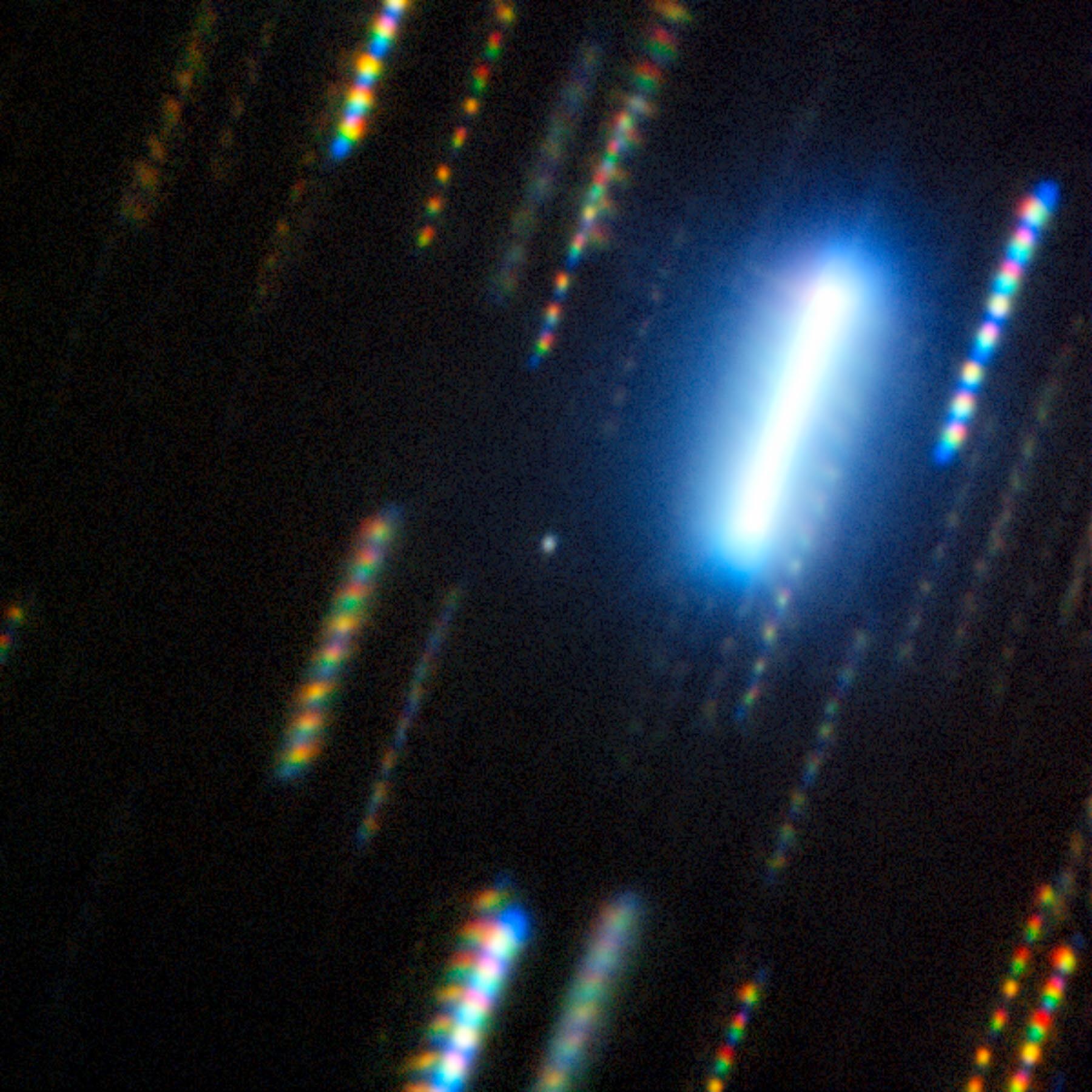Gemini South Observes Shape and Origin of Near-Earth Asteroid 2024 YR4

Using observations from the Gemini South telescope in Chile, one half of the International Gemini Observatory, partly funded by the U.S. National Science Foundation and operated by NSF NOIRLab, astronomers have constructed a 3D representation of the newly discovered near-Earth asteroid 2024 YR4. The team determined that the unusually-shaped rock is one of the largest objects in recent history that could impact the Moon, and that it likely originated from the main asteroid belt.
2024 YR4 was first detected on 27 December 2024 by the Asteroid Terrestrial-impact Last Alert System (ATLAS). At the time, the asteroid made a close approach to Earth, passing at a distance of just 0.017 astronomical units(approximately 2.5 million kilometers, or 1.5 million miles). Initial uncertainty regarding its trajectory warranted further investigation, leading astronomers to secure critical special Director’s Discretionary Time on Gemini South for follow-up observations using the Gemini Multi-Object Spectrograph (GMOS) on 7 February 2025.
In late January 2025, one month after its discovery, 2024 YR4 rose above the International Asteroid Warning Network (IAWN) notification threshold of 1% probability of a future impact with Earth, projected for 22 December 2032. This potential threat gained international attention among the public and the media. With further analysis, the Earth impact probability then dropped below 1% in late February. While the asteroid will miss Earth during this encounter, there remains a few percent chance it could hit the Moon instead.
Interested in characterizing the now famous asteroid, the team of astronomers, led by Bryce Bolin of Eureka Scientific, used the Gemini South telescope in Chile, one half of the International Gemini Observatory, partly funded by the U.S. National Science Foundation and operated by NSF NOIRLab, to capture images of it in multiple different wavelengths. Detailed analysis of the asteroid’s lightcurve (pattern of light output in time) allowed the team to determine its composition, orbital characteristics and 3D shape.
“Our observations with Gemini South provided a crucial piece of the puzzle in determining 2024 YR4’s characteristics,” says Bolin, lead author of the paper to appear in The Astrophysical Journal Letters. “Studying this asteroid was vitally important in understanding the population of Earth crossers that have the potential to be Earth impactors and are poorly understood.”
The information gathered from the lightcurves indicates that 2024 YR4 is likely an S-type asteroid, meaning it has a composition rich in silicates. The reflective pattern also suggests a diameter of about 30–65 meters (98–213 feet) [1], making it one of the largest objects in recent history that could impact the Moon. While it remains unlikely, if it does impact the Moon the asteroid will provide an unprecedented opportunity to study the relationship between the size of an asteroid and the size of its resulting impact crater — a previously unknown quantity.
